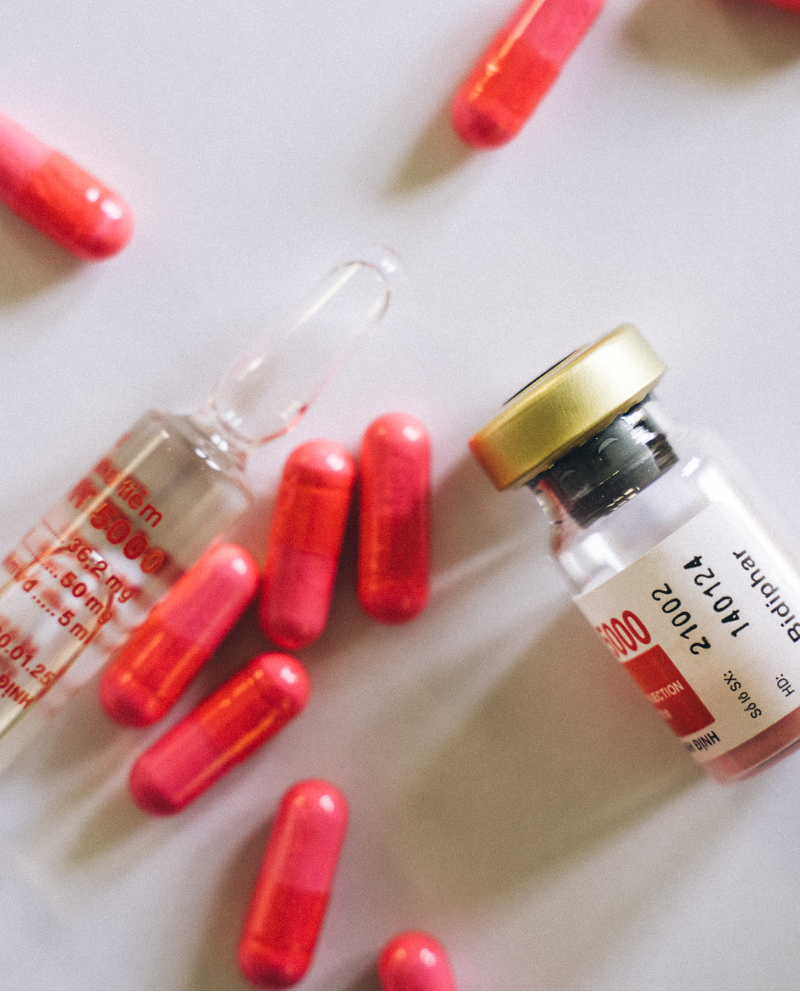Tavor and alcohol: Why this combination is dangerous
Tavor, also known by its active ingredient Lorazepam, is a medication used to treat anxiety disorders, insomnia, and in some cases as a sedative before surgeries. It belongs to the group of benzodiazepines, which act on the central nervous system and produce calming, anxiolytic, and muscle-relaxing effects. Alcohol has a similar effect, as it also influences the central nervous system and relaxes the body. However, this is precisely where the danger lies: combining Tavor and alcohol can lead to increased sedation. Both substances amplify each other's effects, meaning that even small amounts can result in a much stronger effect. This can cause extreme sedation, drowsiness, and in the worst case, respiratory depression, where breathing slows down so much that it becomes a medical emergency. The effects of this combination can also occur hours after intake, as both Tavor and alcohol take some time to be fully metabolized by the body.
Tavor and alcohol: What happens when taken at the same time?
The question “What happens if you take Tavor and drink alcohol at the same time?” is one that many people ask themselves, especially if they have been prescribed the medication and are unsure how alcohol consumption might affect it. Taking both at the same time can lead to a range of symptoms, including:
• Severe sedation: The calming effects of both substances add up, which can result in extreme drowsiness, lethargy, and a feeling of heaviness.
• Slowed reaction time: Your cognitive abilities are significantly impaired. This increases the risk of accidents, especially when driving, and can be dangerous if you are operating machinery or find yourself in hazardous situations.
• Confusion and disorientation: The combination can cause you to lose your sense of direction and make it difficult to think clearly.
• Respiratory depression: One of the greatest risks is that both substances slow down breathing. In the worst case, this can lead to respiratory arrest.
• Memory gaps and blackouts: Many people report memory lapses after mixing the two, during which they cannot recall entire periods of time.
The severity of these symptoms depends on the amount and dosage. Some people are particularly sensitive, which increases the risk of an unpredictable reaction. The duration of the effects can also vary greatly. Some effects may persist even after the alcohol has already been metabolized by the body.


Alcohol and Tavor: Experiences from Those Affected
Numerous personal accounts on the internet, especially in forums like “gutefrage.net” and other health platforms, provide insight into the possible consequences of combining Tavor and alcohol. Many people report blackouts—situations where they did or said things for hours that they later could not remember. Others describe suddenly behaving aggressively or becoming extremely emotional after taking the substances, which was completely out of character for them. A common theme in these reports is the feeling of losing control. While many affected individuals are aware of the dangers of this combination, they often underestimate how quickly and intensely the effects can set in. Even small amounts of alcohol combined with low doses of Tavor can already cause significant impairment. This demonstrates how cautious one must be, even if they believe they can accurately judge the effects.
Tavor and alcohol: risk of addiction
Both Tavor and alcohol have a high potential for dependence, especially when used over a longer period or in high doses. Benzodiazepines like Tavor act on the GABA receptors in the brain, which, with repeated use, leads to an adaptation of the central nervous system. Alcohol has a similar effect, as it also acts on the same receptors. When both substances are taken together, the risk of psychological and physical dependence increases significantly. The body develops tolerance more quickly, meaning increasingly higher doses are needed to achieve the desired effects. This vicious cycle often results in individuals losing control over their consumption and falling into a spiral of addiction. Withdrawal symptoms such as trembling, sweating, anxiety, and insomnia can occur after a short period. Withdrawal is particularly difficult, as it carries significant physical risks and should only be carried out under medical supervision.
Tavor and alcohol: effects on health
The health effects of combining Tavor and alcohol are extremely varied and severe. First, the toxic effects on the body overload the liver, which must metabolize both substances. Over time, this can lead to liver damage or even cirrhosis. The kidneys are also at risk due to the increased strain. There are also cardiovascular risks: The drop in blood pressure caused by the sedative effects of both substances can result in circulatory problems, cardiac arrhythmias, and, in the worst case, heart failure. The risk of developing mental health disorders such as depression and anxiety is also significantly increased, as both Tavor and alcohol disrupt the brain’s natural neurotransmitter balance. Many affected individuals also report persistent concentration and memory problems that can last long after discontinuing the substances.

Tavor and alcohol: Why the combination can be life-threatening
One of the greatest dangers of combining Tavor and alcohol is the potential for overdose. While Tavor already has a calming effect at therapeutic doses, consuming alcohol in addition can unpredictably intensify the effects. A particularly serious issue is that the effects often set in with a delay. Many people therefore believe they can take another dose, which leads to a dangerous overdose. An overdose is characterized by extreme dizziness, confusion, severe muscle weakness, and ultimately such profound sedation that consciousness is lost. The life-threatening risk here is respiratory paralysis. Both substances affect the respiratory center in the brain and can slow breathing to the point where it stops completely. In this situation, immediate emergency medical care is required to save the person's life.


